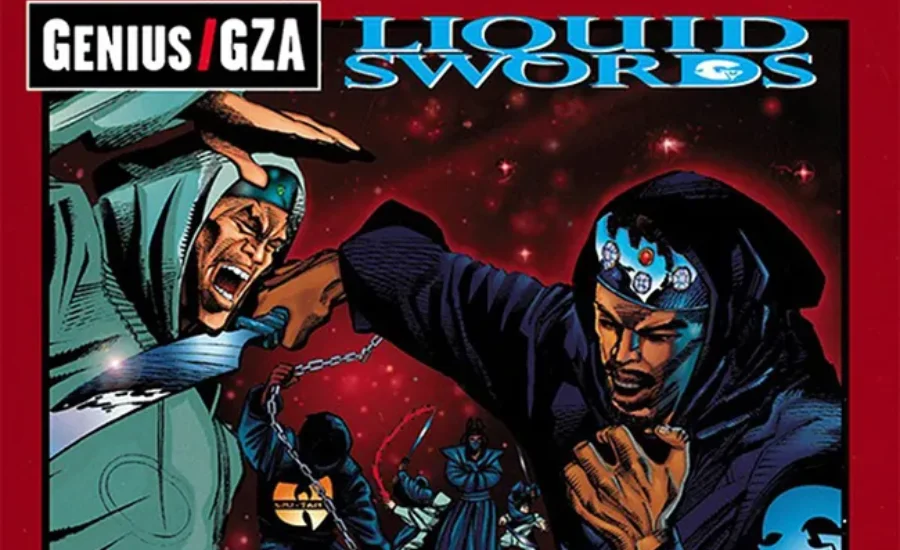BoomBapReviews GZA 1999; The late 1990s are often hailed as a golden era in hip-hop, celebrated for the emergence of influential underground sounds and the iconic Boom Bap style. Among the prominent figures of this period is GZA, a key member of the Wu-Tang Clan, whose 1999 album Beneath the Surface solidified his reputation as a profound lyricist and intellectual force in the genre. This article, inspired by Boombapreviews’ analysis of GZA’s contributions in 1999, explores the production, lyrical depth, and lasting impact of Beneath the Surface.
BoomBapReviews GZA 1999: A Look at “Beneath the Surface”
Gary Grice, widely known as GZA or The Genius, emerged as one of the pioneering members of the Wu-Tang Clan to find success as a solo artist. His debut solo effort, Liquid Swords (1995), remains a seminal work in the genre, celebrated for its intricate storytelling and profound philosophical insights within the framework of hardcore East Coast rap. Building on this success, GZA released Beneath the Surface in 1999, an album that has become a cornerstone of his solo discography. The album garnered acclaim for its introspective lyrics, rich metaphors, and sophisticated rhyme schemes.
During the 1990s, the Boom Bap style—characterized by its powerful drum patterns, minimalistic samples, and raw, unfiltered lyricism—dominated the East Coast hip-hop scene. Influential producers such as DJ Premier, Pete Rock, and RZA, GZA’s Wu-Tang collaborator, were instrumental in defining this sound. GZA’s Beneath the Surface embodies the essence of Boom Bap, combining incisive, intelligent lyrics with gritty, stripped-down beats that capture the genre’s raw energy and depth.
The Cultural Significance and Lasting Legacy of BoomBapReviews GZA 1999

The cultural and musical climate of the late 1990s must be taken into account in order to completely appreciate the significance of BoomBapReviews GZA 1999. Hip-hop reached its pinnacle during this time, with forward-thinking musicians pushing the genre’s limits. It was also a period of change, as the emergence of commercial sounds started to eclipse boombap’s unadulterated, underground nature.
In this context, GZA’s record became apparent as a source of genuineness. It adhered to the fundamentals of hip-hop, emphasizing raw sounds and profound lyrics over mainstream flashiness. In the face of an increasingly commercialized hip-hop movement, this album served as a welcome return to the foundation of boombap for a number of listeners.
The late ’90s were also a period of significant social and political upheaval. Issues such as racial inequality, poverty, and systemic injustice were at the forefront of public consciousness, and hip-hop became a vital platform for addressing these concerns. GZA’s album captured this zeitgeist, offering a voice to the marginalized and highlighting the challenges faced by many in urban America.
BoomBapReviews GZA 1999: A Defining Moment in the Evolution of Boom Bap
The year 1999 marked a pivotal moment in hip-hop, a time when the genre was shifting from the raw, gritty sounds of the early ’90s to a more polished mainstream production. Amidst this transition, GZA released an album that would come to be recognized as a cornerstone of the boom bap subgenre. Known for its distinctive use of heavily sampled beats and complex, introspective lyricism, this album played a crucial role in defining the essence of boom bap.
Boombapreviews, a respected authority within the hip-hop community, has consistently praised BoomBapReviews GZA 1999 for its exceptional lyrical depth and high-quality production. This platform frequently highlights the album in discussions about the greatest boom bap records of all time, noting how it adhered to the core characteristics of the genre while also embracing a significant degree of creative innovation. The album’s ability to balance genre authenticity with inventive elements has solidified its place as a seminal work in the boom bap canon.
The impact of BoomBapReviews GZA 1999 extends well beyond its initial release. It has become a cornerstone of the boombap genre, influencing countless artists who followed. Its sophisticated production, thought-provoking lyrics, and innovative approach have left a lasting mark on hip-hop. Contemporary musicians frequently cite GZA’s 1999 work as a major influence, demonstrating its enduring relevance and inspirational power.
The album also reinforced GZA’s status as one of hip-hop’s greatest lyricists. His exceptional talent showcased in this release solidified his place among the genre’s elite. For enthusiasts of boombap and hip-hop, BoomBapReviews GZA 1999 represents more than just a collection of tracks; it stands as a monumental achievement that continues to shape and inspire the genre.
GZA and the Evolution of Hip-Hop: A Look at His 1999 Masterpiece

Hip-hop has changed greatly from its Bronx beginnings by the late 1990s. The genre started to break up into many sub-genres as it became more popular in general. GZA stood out throughout this transition by continuing to adhere to the fundamental components of hip-hop while expanding the parameters of creative lyricism. In 1999, his writing demonstrated a sophisticated grasp of the genre’s past in addition to a progressive approach to narrative and poetry.
The album that GZA released in 1999 was one of his most well-received releases and is considered a masterpiece by many. This record, which was a sequel to his ground-breaking Liquid Swords, showed a depth and maturity that impressed critics and fans alike. It had a lasting influence on upcoming artists since it not only created new trends but also followed existing ones.
The album’s significance has been consistently underscored by reviewers, including Boombapreviews, who highlight how it captured the essence of late 90s hip-hop while advancing the genre. With production largely overseen by RZA, the album featured gritty beats layered with intricate sounds, creating a backdrop that perfectly complemented GZA’s sophisticated lyricism.
Boombapreviews and the Legacy of BoomBapReviews GZA 1999
Boombapreviews has become an essential resource for those seeking an in-depth understanding of hip-hop, renowned for its comprehensive and insightful analyses. Their reviews go beyond surface-level critiques, offering a deeper exploration of the music and its place in hip-hop history. In their examination of GZA’s 1999 work, Boombapreviews delves into not only the album itself but also its significance within the broader context of the genre.
In an era when music journalism can often seem superficial, Boombapreviews distinguishes itself through its commitment to quality and depth. Their reviews focus not just on whether an album is good or bad but on its broader impact and meaning. When evaluating GZA’s 1999 release, Boombapreviews approached the work with a profound understanding of both the artist and the culture he represents.
BoomBapReviews GZA 1999: A Masterclass in Boom Bap Production

BoomBapReviews GZA 1999 stands out not just for its lyrical brilliance but also for its exceptional production quality. The beats, a compelling mix of classic boom bap and experimental sounds, create a dynamic sonic landscape that perfectly complements GZA’s storytelling. The album’s production, spearheaded by Wu-Tang Clan’s RZA, features hard-hitting yet soulful beats that set an ideal backdrop for GZA’s intricate lyrics.
The Wu-Tang Clan’s distinctive sound heavily influences this album. Known for their dark, atmospheric beats and obscure samples, Wu-Tang’s production style is evident throughout the album. GZA and his collaborators harness these elements to create a unique auditory experience that aligns with the Wu-Tang aesthetic.
More than two decades after its release, BoomBapReviews GZA 1999 remains a cornerstone of hip-hop, frequently cited in discussions about the genre’s best examples of boom bap. Boombapreviews, a prominent source in the hip-hop community, often features the album in retrospectives, highlighting its enduring influence and significance.
GZA’s contributions extend beyond his discography. As a founding member of the Wu-Tang Clan, he played a crucial role in shaping the direction of hip-hop in the 1990s and beyond. His 1995 album exemplifies his commitment to the genre, showcasing lyrical sophistication and innovative production that continues to resonate with audiences today.
Final Words
BoomBapReviews GZA 1999 represents a pivotal moment in hip-hop, capturing the essence of boom bap while pushing its boundaries. The album’s exceptional production, characterized by a blend of classic and experimental beats, complements GZA’s intricate lyricism, showcasing his unique storytelling ability. The influence of the Wu-Tang Clan’s signature sound is evident throughout, reinforcing the album’s place in the genre’s rich history.
As time passes, GZA’s work remains a touchstone for both fans and artists, underscoring its lasting impact on hip-hop culture. Its continued relevance in discussions about classic boom bap records highlights the album’s enduring quality and the profound effect it has had on subsequent generations of musicians. GZA’s contribution to hip-hop, exemplified by this album, underscores his role as a defining figure in the genre, with a legacy that continues to inspire and shape the future of music.
For more information and updates join us on Incredible Wave.

